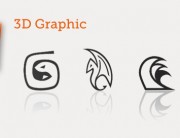Unity 3D Game Engine – Platform Controller – 3rd Person
A platform game (or platformer) is a video game which involves guiding an avatar to jump between suspended platforms, over obstacles, or both to advance the game. These challenges are known as jumping puzzles or freerunning.
Standard Assets – Ready to use
1. MAIN TOP MENU> Create Other> Plane, name it ‘Ground’
2. MAIN TOP MENU> Assets> Import Package> Character Controller
3. Project> Standard Assets> 3rd Person Controller (the blue cube)> DRAG AND DROP it over the Scene Window
4. Hierarchy> 3rd Person Controller> Inspector> Transform>
– Reset
– Position Y= 0.97 (bisogna posizionarlo in modo che il Collider ‘Character Controller’ sia sopra a ‘Ground’)
5. Hierarchy> select the Character and remove all Scripts
6. Project> DRAG AND DROP OVER THE CHARACTER ‘Platform Input Controller.js’
Analisys
Hierarchy>
— Bip001 (Biped Skeleton)
— Bip001 Pelvis
— etc… (le altre parti di Biped)
— construction_worker (mesh)
Il personaggio sarà in grado:
– di essere completamente animato
– di correre anche su superfici irregolari, come può essere una collina
– di essere bloccato dalla presenza di ostacoli
– di saltare degli ostacoli con salto breve o più alto a seconda di quanto a lunga viene tenuta premuta la barra spazio
Questo grazie all’interazione di Collider posizionati sugli oggetti e sul terreno.
Analizziamo il contenuto degli oggetti in scena:
Ground
– Transform
– Mesh
– Mesh Collider
– Mesh Renderer
NOTA BENE: il terreno per la collisione DEVE essere una mesh separata da quella che utilizziamo per il rendering, con meno poligoni per ottimizzare il calcolo delle collisioni. In questo caso toglieremo il componente ‘Mesh Renderer’
Character
– Transform
– Animation
– Character Controller
– Character Motor (JS Script)
– Platform Input Controller (JS Script)
Character Controller
Ha la forma di una capsula
– Slope Limit (buon valore 45): la pendenza del terreno massima che può superare
– Step Offset (buon valore 0.3): il personaggio potrà salire i gradini di una scalinata se sono al massimo alti 0.3 unità
– Skin Width (buon valore è 10% di Radius): 2 collider si possono penetrare del valore specificato. Un valore alto riduce il jitter (tremolii)
– Min Mov Distance (raccomandato a 0): se il personaggio tenta di muoversi di una valore inferiore a quello indicato, non si muoverà. Serve per ridurre il jitter (tremolii)
– Center: il centro della capsula
– Radius: raggio della capsula
– Height (2 metri per un umano): altezza della capsula
Character Motor (JS Script)
#pragma strict
#pragma implicit
#pragma downcast
// Does this script currently respond to input?
var canControl : boolean = true;
var useFixedUpdate : boolean = true;
// For the next variables, @System.NonSerialized tells Unity to not serialize the variable or show it in the inspector view.
// Very handy for organization!
// The current global direction we want the character to move in.
@System.NonSerialized
var inputMoveDirection : Vector3 = Vector3.zero;
// Is the jump button held down? We use this interface instead of checking
// for the jump button directly so this script can also be used by AIs.
@System.NonSerialized
var inputJump : boolean = false;
class CharacterMotorMovement {
// The maximum horizontal speed when moving
var maxForwardSpeed : float = 10.0;
var maxSidewaysSpeed : float = 10.0;
var maxBackwardsSpeed : float = 10.0;
// Curve for multiplying speed based on slope (negative = downwards)
var slopeSpeedMultiplier : AnimationCurve = AnimationCurve(Keyframe(-90, 1), Keyframe(0, 1), Keyframe(90, 0));
// How fast does the character change speeds? Higher is faster.
var maxGroundAcceleration : float = 30.0;
var maxAirAcceleration : float = 20.0;
// The gravity for the character
var gravity : float = 10.0;
var maxFallSpeed : float = 20.0;
// For the next variables, @System.NonSerialized tells Unity to not serialize the variable or show it in the inspector view.
// Very handy for organization!
// The last collision flags returned from controller.Move
@System.NonSerialized
var collisionFlags : CollisionFlags;
// We will keep track of the character's current velocity,
@System.NonSerialized
var velocity : Vector3;
// This keeps track of our current velocity while we're not grounded
@System.NonSerialized
var frameVelocity : Vector3 = Vector3.zero;
@System.NonSerialized
var hitPoint : Vector3 = Vector3.zero;
@System.NonSerialized
var lastHitPoint : Vector3 = Vector3(Mathf.Infinity, 0, 0);
}
var movement : CharacterMotorMovement = CharacterMotorMovement();
enum MovementTransferOnJump {
None, // The jump is not affected by velocity of floor at all.
InitTransfer, // Jump gets its initial velocity from the floor, then gradualy comes to a stop.
PermaTransfer, // Jump gets its initial velocity from the floor, and keeps that velocity until landing.
PermaLocked // Jump is relative to the movement of the last touched floor and will move together with that floor.
}
// We will contain all the jumping related variables in one helper class for clarity.
class CharacterMotorJumping {
// Can the character jump?
var enabled : boolean = true;
// How high do we jump when pressing jump and letting go immediately
var baseHeight : float = 1.0;
// We add extraHeight units (meters) on top when holding the button down longer while jumping
var extraHeight : float = 4.1;
// How much does the character jump out perpendicular to the surface on walkable surfaces?
// 0 means a fully vertical jump and 1 means fully perpendicular.
var perpAmount : float = 0.0;
// How much does the character jump out perpendicular to the surface on too steep surfaces?
// 0 means a fully vertical jump and 1 means fully perpendicular.
var steepPerpAmount : float = 0.5;
// For the next variables, @System.NonSerialized tells Unity to not serialize the variable or show it in the inspector view.
// Very handy for organization!
// Are we jumping? (Initiated with jump button and not grounded yet)
// To see if we are just in the air (initiated by jumping OR falling) see the grounded variable.
@System.NonSerialized
var jumping : boolean = false;
@System.NonSerialized
var holdingJumpButton : boolean = false;
// the time we jumped at (Used to determine for how long to apply extra jump power after jumping.)
@System.NonSerialized
var lastStartTime : float = 0.0;
@System.NonSerialized
var lastButtonDownTime : float = -100;
@System.NonSerialized
var jumpDir : Vector3 = Vector3.up;
}
var jumping : CharacterMotorJumping = CharacterMotorJumping();
class CharacterMotorMovingPlatform {
var enabled : boolean = true;
var movementTransfer : MovementTransferOnJump = MovementTransferOnJump.PermaTransfer;
@System.NonSerialized
var hitPlatform : Transform;
@System.NonSerialized
var activePlatform : Transform;
@System.NonSerialized
var activeLocalPoint : Vector3;
@System.NonSerialized
var activeGlobalPoint : Vector3;
@System.NonSerialized
var activeLocalRotation : Quaternion;
@System.NonSerialized
var activeGlobalRotation : Quaternion;
@System.NonSerialized
var lastMatrix : Matrix4x4;
@System.NonSerialized
var platformVelocity : Vector3;
@System.NonSerialized
var newPlatform : boolean;
}
var movingPlatform : CharacterMotorMovingPlatform = CharacterMotorMovingPlatform();
class CharacterMotorSliding {
// Does the character slide on too steep surfaces?
var enabled : boolean = true;
// How fast does the character slide on steep surfaces?
var slidingSpeed : float = 15;
// How much can the player control the sliding direction?
// If the value is 0.5 the player can slide sideways with half the speed of the downwards sliding speed.
var sidewaysControl : float = 1.0;
// How much can the player influence the sliding speed?
// If the value is 0.5 the player can speed the sliding up to 150% or slow it down to 50%.
var speedControl : float = 0.4;
}
var sliding : CharacterMotorSliding = CharacterMotorSliding();
@System.NonSerialized
var grounded : boolean = true;
@System.NonSerialized
var groundNormal : Vector3 = Vector3.zero;
private var lastGroundNormal : Vector3 = Vector3.zero;
private var tr : Transform;
private var controller : CharacterController;
function Awake () {
controller = GetComponent (CharacterController);
tr = transform;
}
private function UpdateFunction () {
// We copy the actual velocity into a temporary variable that we can manipulate.
var velocity : Vector3 = movement.velocity;
// Update velocity based on input
velocity = ApplyInputVelocityChange(velocity);
// Apply gravity and jumping force
velocity = ApplyGravityAndJumping (velocity);
// Moving platform support
var moveDistance : Vector3 = Vector3.zero;
if (MoveWithPlatform()) {
var newGlobalPoint : Vector3 = movingPlatform.activePlatform.TransformPoint(movingPlatform.activeLocalPoint);
moveDistance = (newGlobalPoint - movingPlatform.activeGlobalPoint);
if (moveDistance != Vector3.zero)
controller.Move(moveDistance);
// Support moving platform rotation as well:
var newGlobalRotation : Quaternion = movingPlatform.activePlatform.rotation * movingPlatform.activeLocalRotation;
var rotationDiff : Quaternion = newGlobalRotation * Quaternion.Inverse(movingPlatform.activeGlobalRotation);
var yRotation = rotationDiff.eulerAngles.y;
if (yRotation != 0) {
// Prevent rotation of the local up vector
tr.Rotate(0, yRotation, 0);
}
}
// Save lastPosition for velocity calculation.
var lastPosition : Vector3 = tr.position;
// We always want the movement to be framerate independent. Multiplying by Time.deltaTime does this.
var currentMovementOffset : Vector3 = velocity * Time.deltaTime;
// Find out how much we need to push towards the ground to avoid loosing grouning
// when walking down a step or over a sharp change in slope.
var pushDownOffset : float = Mathf.Max(controller.stepOffset, Vector3(currentMovementOffset.x, 0, currentMovementOffset.z).magnitude);
if (grounded)
currentMovementOffset -= pushDownOffset * Vector3.up;
// Reset variables that will be set by collision function
movingPlatform.hitPlatform = null;
groundNormal = Vector3.zero;
// Move our character!
movement.collisionFlags = controller.Move (currentMovementOffset);
movement.lastHitPoint = movement.hitPoint;
lastGroundNormal = groundNormal;
if (movingPlatform.enabled && movingPlatform.activePlatform != movingPlatform.hitPlatform) {
if (movingPlatform.hitPlatform != null) {
movingPlatform.activePlatform = movingPlatform.hitPlatform;
movingPlatform.lastMatrix = movingPlatform.hitPlatform.localToWorldMatrix;
movingPlatform.newPlatform = true;
}
}
// Calculate the velocity based on the current and previous position.
// This means our velocity will only be the amount the character actually moved as a result of collisions.
var oldHVelocity : Vector3 = new Vector3(velocity.x, 0, velocity.z);
movement.velocity = (tr.position - lastPosition) / Time.deltaTime;
var newHVelocity : Vector3 = new Vector3(movement.velocity.x, 0, movement.velocity.z);
// The CharacterController can be moved in unwanted directions when colliding with things.
// We want to prevent this from influencing the recorded velocity.
if (oldHVelocity == Vector3.zero) {
movement.velocity = new Vector3(0, movement.velocity.y, 0);
}
else {
var projectedNewVelocity : float = Vector3.Dot(newHVelocity, oldHVelocity) / oldHVelocity.sqrMagnitude;
movement.velocity = oldHVelocity * Mathf.Clamp01(projectedNewVelocity) + movement.velocity.y * Vector3.up;
}
if (movement.velocity.y < velocity.y - 0.001) {
if (movement.velocity.y < 0) {
// Something is forcing the CharacterController down faster than it should.
// Ignore this
movement.velocity.y = velocity.y;
}
else {
// The upwards movement of the CharacterController has been blocked.
// This is treated like a ceiling collision - stop further jumping here.
jumping.holdingJumpButton = false;
}
}
// We were grounded but just loosed grounding
if (grounded && !IsGroundedTest()) {
grounded = false;
// Apply inertia from platform
if (movingPlatform.enabled &&
(movingPlatform.movementTransfer == MovementTransferOnJump.InitTransfer ||
movingPlatform.movementTransfer == MovementTransferOnJump.PermaTransfer)
) {
movement.frameVelocity = movingPlatform.platformVelocity;
movement.velocity += movingPlatform.platformVelocity;
}
SendMessage("OnFall", SendMessageOptions.DontRequireReceiver);
// We pushed the character down to ensure it would stay on the ground if there was any.
// But there wasn't so now we cancel the downwards offset to make the fall smoother.
tr.position += pushDownOffset * Vector3.up;
}
// We were not grounded but just landed on something
else if (!grounded && IsGroundedTest()) {
grounded = true;
jumping.jumping = false;
SubtractNewPlatformVelocity();
SendMessage("OnLand", SendMessageOptions.DontRequireReceiver);
}
// Moving platforms support
if (MoveWithPlatform()) {
// Use the center of the lower half sphere of the capsule as reference point.
// This works best when the character is standing on moving tilting platforms.
movingPlatform.activeGlobalPoint = tr.position + Vector3.up * (controller.center.y - controller.height*0.5 + controller.radius);
movingPlatform.activeLocalPoint = movingPlatform.activePlatform.InverseTransformPoint(movingPlatform.activeGlobalPoint);
// Support moving platform rotation as well:
movingPlatform.activeGlobalRotation = tr.rotation;
movingPlatform.activeLocalRotation = Quaternion.Inverse(movingPlatform.activePlatform.rotation) * movingPlatform.activeGlobalRotation;
}
}
function FixedUpdate () {
if (movingPlatform.enabled) {
if (movingPlatform.activePlatform != null) {
if (!movingPlatform.newPlatform) {
var lastVelocity : Vector3 = movingPlatform.platformVelocity;
movingPlatform.platformVelocity = (
movingPlatform.activePlatform.localToWorldMatrix.MultiplyPoint3x4(movingPlatform.activeLocalPoint)
- movingPlatform.lastMatrix.MultiplyPoint3x4(movingPlatform.activeLocalPoint)
) / Time.deltaTime;
}
movingPlatform.lastMatrix = movingPlatform.activePlatform.localToWorldMatrix;
movingPlatform.newPlatform = false;
}
else {
movingPlatform.platformVelocity = Vector3.zero;
}
}
if (useFixedUpdate)
UpdateFunction();
}
function Update () {
if (!useFixedUpdate)
UpdateFunction();
}
private function ApplyInputVelocityChange (velocity : Vector3) {
if (!canControl)
inputMoveDirection = Vector3.zero;
// Find desired velocity
var desiredVelocity : Vector3;
if (grounded && TooSteep()) {
// The direction we're sliding in
desiredVelocity = Vector3(groundNormal.x, 0, groundNormal.z).normalized;
// Find the input movement direction projected onto the sliding direction
var projectedMoveDir = Vector3.Project(inputMoveDirection, desiredVelocity);
// Add the sliding direction, the spped control, and the sideways control vectors
desiredVelocity = desiredVelocity + projectedMoveDir * sliding.speedControl + (inputMoveDirection - projectedMoveDir) * sliding.sidewaysControl;
// Multiply with the sliding speed
desiredVelocity *= sliding.slidingSpeed;
}
else
desiredVelocity = GetDesiredHorizontalVelocity();
if (movingPlatform.enabled && movingPlatform.movementTransfer == MovementTransferOnJump.PermaTransfer) {
desiredVelocity += movement.frameVelocity;
desiredVelocity.y = 0;
}
if (grounded)
desiredVelocity = AdjustGroundVelocityToNormal(desiredVelocity, groundNormal);
else
velocity.y = 0;
// Enforce max velocity change
var maxVelocityChange : float = GetMaxAcceleration(grounded) * Time.deltaTime;
var velocityChangeVector : Vector3 = (desiredVelocity - velocity);
if (velocityChangeVector.sqrMagnitude > maxVelocityChange * maxVelocityChange) {
velocityChangeVector = velocityChangeVector.normalized * maxVelocityChange;
}
// If we're in the air and don't have control, don't apply any velocity change at all.
// If we're on the ground and don't have control we do apply it - it will correspond to friction.
if (grounded || canControl)
velocity += velocityChangeVector;
if (grounded) {
// When going uphill, the CharacterController will automatically move up by the needed amount.
// Not moving it upwards manually prevent risk of lifting off from the ground.
// When going downhill, DO move down manually, as gravity is not enough on steep hills.
velocity.y = Mathf.Min(velocity.y, 0);
}
return velocity;
}
private function ApplyGravityAndJumping (velocity : Vector3) {
if (!inputJump || !canControl) {
jumping.holdingJumpButton = false;
jumping.lastButtonDownTime = -100;
}
if (inputJump && jumping.lastButtonDownTime < 0 && canControl)
jumping.lastButtonDownTime = Time.time;
if (grounded)
velocity.y = Mathf.Min(0, velocity.y) - movement.gravity * Time.deltaTime;
else {
velocity.y = movement.velocity.y - movement.gravity * Time.deltaTime;
// When jumping up we don't apply gravity for some time when the user is holding the jump button.
// This gives more control over jump height by pressing the button longer.
if (jumping.jumping && jumping.holdingJumpButton) {
// Calculate the duration that the extra jump force should have effect.
// If we're still less than that duration after the jumping time, apply the force.
if (Time.time < jumping.lastStartTime + jumping.extraHeight / CalculateJumpVerticalSpeed(jumping.baseHeight)) {
// Negate the gravity we just applied, except we push in jumpDir rather than jump upwards.
velocity += jumping.jumpDir * movement.gravity * Time.deltaTime;
}
}
// Make sure we don't fall any faster than maxFallSpeed. This gives our character a terminal velocity.
velocity.y = Mathf.Max (velocity.y, -movement.maxFallSpeed);
}
if (grounded) {
// Jump only if the jump button was pressed down in the last 0.2 seconds.
// We use this check instead of checking if it's pressed down right now
// because players will often try to jump in the exact moment when hitting the ground after a jump
// and if they hit the button a fraction of a second too soon and no new jump happens as a consequence,
// it's confusing and it feels like the game is buggy.
if (jumping.enabled && canControl && (Time.time - jumping.lastButtonDownTime < 0.2)) {
grounded = false;
jumping.jumping = true;
jumping.lastStartTime = Time.time;
jumping.lastButtonDownTime = -100;
jumping.holdingJumpButton = true;
// Calculate the jumping direction
if (TooSteep())
jumping.jumpDir = Vector3.Slerp(Vector3.up, groundNormal, jumping.steepPerpAmount);
else
jumping.jumpDir = Vector3.Slerp(Vector3.up, groundNormal, jumping.perpAmount);
// Apply the jumping force to the velocity. Cancel any vertical velocity first.
velocity.y = 0;
velocity += jumping.jumpDir * CalculateJumpVerticalSpeed (jumping.baseHeight);
// Apply inertia from platform
if (movingPlatform.enabled &&
(movingPlatform.movementTransfer == MovementTransferOnJump.InitTransfer ||
movingPlatform.movementTransfer == MovementTransferOnJump.PermaTransfer)
) {
movement.frameVelocity = movingPlatform.platformVelocity;
velocity += movingPlatform.platformVelocity;
}
SendMessage("OnJump", SendMessageOptions.DontRequireReceiver);
}
else {
jumping.holdingJumpButton = false;
}
}
return velocity;
}
function OnControllerColliderHit (hit : ControllerColliderHit) {
if (hit.normal.y > 0 && hit.normal.y > groundNormal.y && hit.moveDirection.y < 0) {
if ((hit.point - movement.lastHitPoint).sqrMagnitude > 0.001 || lastGroundNormal == Vector3.zero)
groundNormal = hit.normal;
else
groundNormal = lastGroundNormal;
movingPlatform.hitPlatform = hit.collider.transform;
movement.hitPoint = hit.point;
movement.frameVelocity = Vector3.zero;
}
}
private function SubtractNewPlatformVelocity () {
// When landing, subtract the velocity of the new ground from the character's velocity
// since movement in ground is relative to the movement of the ground.
if (movingPlatform.enabled &&
(movingPlatform.movementTransfer == MovementTransferOnJump.InitTransfer ||
movingPlatform.movementTransfer == MovementTransferOnJump.PermaTransfer)
) {
// If we landed on a new platform, we have to wait for two FixedUpdates
// before we know the velocity of the platform under the character
if (movingPlatform.newPlatform) {
var platform : Transform = movingPlatform.activePlatform;
yield WaitForFixedUpdate();
yield WaitForFixedUpdate();
if (grounded && platform == movingPlatform.activePlatform)
yield 1;
}
movement.velocity -= movingPlatform.platformVelocity;
}
}
private function MoveWithPlatform () : boolean {
return (
movingPlatform.enabled
&& (grounded || movingPlatform.movementTransfer == MovementTransferOnJump.PermaLocked)
&& movingPlatform.activePlatform != null
);
}
private function GetDesiredHorizontalVelocity () {
// Find desired velocity
var desiredLocalDirection : Vector3 = tr.InverseTransformDirection(inputMoveDirection);
var maxSpeed : float = MaxSpeedInDirection(desiredLocalDirection);
if (grounded) {
// Modify max speed on slopes based on slope speed multiplier curve
var movementSlopeAngle = Mathf.Asin(movement.velocity.normalized.y) * Mathf.Rad2Deg;
maxSpeed *= movement.slopeSpeedMultiplier.Evaluate(movementSlopeAngle);
}
return tr.TransformDirection(desiredLocalDirection * maxSpeed);
}
private function AdjustGroundVelocityToNormal (hVelocity : Vector3, groundNormal : Vector3) : Vector3 {
var sideways : Vector3 = Vector3.Cross(Vector3.up, hVelocity);
return Vector3.Cross(sideways, groundNormal).normalized * hVelocity.magnitude;
}
private function IsGroundedTest () {
return (groundNormal.y > 0.01);
}
function GetMaxAcceleration (grounded : boolean) : float {
// Maximum acceleration on ground and in air
if (grounded)
return movement.maxGroundAcceleration;
else
return movement.maxAirAcceleration;
}
function CalculateJumpVerticalSpeed (targetJumpHeight : float) {
// From the jump height and gravity we deduce the upwards speed
// for the character to reach at the apex.
return Mathf.Sqrt (2 * targetJumpHeight * movement.gravity);
}
function IsJumping () {
return jumping.jumping;
}
function IsSliding () {
return (grounded && sliding.enabled && TooSteep());
}
function IsTouchingCeiling () {
return (movement.collisionFlags & CollisionFlags.CollidedAbove) != 0;
}
function IsGrounded () {
return grounded;
}
function TooSteep () {
return (groundNormal.y <= Mathf.Cos(controller.slopeLimit * Mathf.Deg2Rad));
}
function GetDirection () {
return inputMoveDirection;
}
function SetControllable (controllable : boolean) {
canControl = controllable;
}
// Project a direction onto elliptical quater segments based on forward, sideways, and backwards speed.
// The function returns the length of the resulting vector.
function MaxSpeedInDirection (desiredMovementDirection : Vector3) : float {
if (desiredMovementDirection == Vector3.zero)
return 0;
else {
var zAxisEllipseMultiplier : float = (desiredMovementDirection.z > 0 ? movement.maxForwardSpeed : movement.maxBackwardsSpeed) / movement.maxSidewaysSpeed;
var temp : Vector3 = new Vector3(desiredMovementDirection.x, 0, desiredMovementDirection.z / zAxisEllipseMultiplier).normalized;
var length : float = new Vector3(temp.x, 0, temp.z * zAxisEllipseMultiplier).magnitude * movement.maxSidewaysSpeed;
return length;
}
}
function SetVelocity (velocity : Vector3) {
grounded = false;
movement.velocity = velocity;
movement.frameVelocity = Vector3.zero;
SendMessage("OnExternalVelocity");
}
// Require a character controller to be attached to the same game object
@script RequireComponent (CharacterController)
@script AddComponentMenu ("Character/Character Motor")
Platform Input Controller (JS SCript)
// This makes the character turn to face the current movement speed per default.
var autoRotate : boolean = true;
var maxRotationSpeed : float = 360;
private var motor : CharacterMotor;
// Use this for initialization
function Awake () {
motor = GetComponent(CharacterMotor);
}
// Update is called once per frame
function Update () {
// Get the input vector from keyboard or analog stick
var directionVector = new Vector3(Input.GetAxis("Horizontal"), Input.GetAxis("Vertical"), 0);
if (directionVector != Vector3.zero) {
// Get the length of the directon vector and then normalize it
// Dividing by the length is cheaper than normalizing when we already have the length anyway
var directionLength = directionVector.magnitude;
directionVector = directionVector / directionLength;
// Make sure the length is no bigger than 1
directionLength = Mathf.Min(1, directionLength);
// Make the input vector more sensitive towards the extremes and less sensitive in the middle
// This makes it easier to control slow speeds when using analog sticks
directionLength = directionLength * directionLength;
// Multiply the normalized direction vector by the modified length
directionVector = directionVector * directionLength;
}
// Rotate the input vector into camera space so up is camera's up and right is camera's right
directionVector = Camera.main.transform.rotation * directionVector;
// Rotate input vector to be perpendicular to character's up vector
var camToCharacterSpace = Quaternion.FromToRotation(-Camera.main.transform.forward, transform.up);
directionVector = (camToCharacterSpace * directionVector);
// Apply the direction to the CharacterMotor
motor.inputMoveDirection = directionVector;
motor.inputJump = Input.GetButton("Jump");
// Set rotation to the move direction
if (autoRotate && directionVector.sqrMagnitude > 0.01) {
var newForward : Vector3 = ConstantSlerp(
transform.forward,
directionVector,
maxRotationSpeed * Time.deltaTime
);
newForward = ProjectOntoPlane(newForward, transform.up);
transform.rotation = Quaternion.LookRotation(newForward, transform.up);
}
}
function ProjectOntoPlane (v : Vector3, normal : Vector3) {
return v - Vector3.Project(v, normal);
}
function ConstantSlerp (from : Vector3, to : Vector3, angle : float) {
var value : float = Mathf.Min(1, angle / Vector3.Angle(from, to));
return Vector3.Slerp(from, to, value);
}
// Require a character controller to be attached to the same game object
@script RequireComponent (CharacterMotor)
@script AddComponentMenu ("Character/Platform Input Controller")










